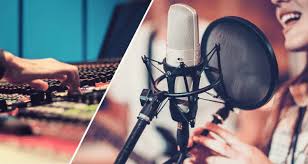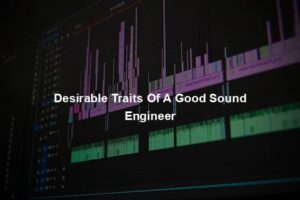
How Is Dubbing Done From Beginning To End?
Cinema has long been an international form of entertainment, and this has been made possible through the innovation and the process of dubbing. While some films might receive international recognition for subtitles, many audiences prefer hearing dialogue in their native language, which puts quality dubbing in high demand.
- Dubbing can also be used in a film’s original language. As much as technology has progressed over the past one-hundred years since the first audiovisual, unexpected circumstances can arise that make the original dialogue that was captured on set useless. In such cases, filmmakers may choose to dub dialogue with that captured in post-production to ensure better quality.
- No matter if it’s an aspiring filmmaker, sound specialist or Actor, anyone with a foot in the entertainment industry can more thoroughly acquaint themselves with dubbing processes as a means to better understand the practice and art of the technique, as well as how it can impact both the outcome and audience of a film.
In this article, we will take a close look into :
- Dubbing versus voice-over
- Scriptwriting for dubbing
- Deciding on cast talents.
- Recording the dialogue
- Layering the tracks
A Brief Synopsis Of The Art Of Voice-Over
Before jumping straight into explaining how to best use dubbing to enhance or diversify a film, it’s better to get a clear understanding of what dubbing is and what it is no in order to avoid confusion. Anyone who is the film industry or has an interest in joining the film industry should be able to understand the difference between dubbing and another found element referred to as voice-over.
- Same as dubbing, voice-over can be employed in more than one way. For example, voice-over is often used as an internal dialogue for a character. Whether that dialogue is being relayed to an audience is up to the filmmaker. Regardless of the voice-over being used to enlighten audiences to the general knowledge of the audience or to communicate directly with them, it can help to inform the story and character arc.
- The difference in Dubbing and voice-over is normally noticed mostly in terms of their notice-ability. Voice-over is meant to serve a creative storytelling purpose, same as in a narrative film, or a more direct translation purpose like in documentaries. Conversely, the most effective dubbing is the kind that goes unnoticed by audiences. Whether it’s relaying dialogue in a native tongue or replacing unusable on-set sound, good dubbing is “invisible” to the ear listening to it.
- Dubbing being a more technical and thorough technique for film-audio translation, it’s normally advisable for the person tasked with handle the job to be an expert in layering dialogue to ensure the best possible outcome.
Complete article on [What is Voice Over Recording…]
Steps Followed in The Dubbing Process
It’s very important to keep in mind that even the most experienced and expert of experts in film making cannot dub a film by themselves. It’s an involved process that requires the expertise of several experts. So for any filmmaker who might require dubbing services for a project, the first step to success is collaborating with the appropriate professionals who can help to ensure the needed outcome.
With that being said the following is a clear step by step outline of how film dubbing happens.
1. Creating a Script
- For instance, if the film being dubbed is supposed to be dubbed in a totally different language than the original one, the first requirement is to recreate dialogue for the film in the native language of the targeted audience. Of course, the script will then need to be translated into that language. This part of the dubbing process is however more involved than one might initially assume. This is Because in dubbing, timing is everything. The objective is not only to translate the dialogue but also to have it match in timing and/or sync up with that of the original language.
- The thing that makes this part of dubbing really tricky is that what is said in three words in one language can be said in one word in another. For a dub be the exact same to the original dialogue then one has to create time-codes for the beginning statement of dialogues to the end of the statement for easier dubbing for the cast talent. This is why experts are needed in order to ensure that the translated context is still within the meaning of the original context.
2. Choosing Voice Talent.
- This is another critical part of a successful dubbing project which includes finding the right cast talent. Many creatives and performers specialize in dubbing for particular audience markets, which can be helpful for filmmakers looking for someone who understands the specialized needs of the process.
- Specifically, dubbing talent has to be able to adhere to timing requirements, have a voice that matches the one of the original cast and be able to bring out the emotions and mood relayed by the original cast. In many cases, they may be in a recording studio, watching the original performance, as they speak the translated dialogue to better ensure that they say their lines in sync with it.
- As mentioned earlier, the point of dubbing is to make it possible for an audience to follow the film in their native language. To help ensure that they can enjoy the experience without noticing dubbing efforts, it can be immensely beneficial to find performers who have similar vocal qualities to that of the film’s characters.
Complete article on [How To Get The Best Cast For Dubbing…]
3. Recording the Dialogue.
- So far it’s very visible that every step of the dubbing process requires a certain level of professional expertise in order to ensure that the dubbed material comes out perfectly. This is especially taken with absolute seriousness when it comes to recording the dubbed dialogue, though it really goes without saying that, it’s important that all film-making professionals involved take every precaution to guarantee a successful session.
- This only means being able to get an appropriate location to do the recordings. Most if not all dubbing and voice-over professionals have high- caliber recording studios in their homes, filmmakers responsible or the dubbing process should be able to book a space that has the equipment to handle all dubbing needs for their clients. It’s always highly advisable to use a professional studio.
- Since the dubbing process involves many involved parties from the film-making professionals, to the translation specialist, dubbing talent and sound experts, are expected to organize more recording sessions can only mean a large expenditure of additional time, money and energy. So to ensure that the dub is successful the first time around, filmmakers should collaborate with those within their means who have the highest level of expertise.
4. Layering (Mixing) the Tracks
- So far the script has been written, the talent cast hired and recording of the dubbed dialogue finished so what follows next you might ask. Now comes the final part of the dubbing process which is layering the new dialogue tracks into the film!
- Most filmmakers are known to taking this part of the process more seriously than the other parts, do not confuse that by thinking that they don’t take as much pride in the latter processes but layering of the tracks is taken more seriously because of its level of technicality which at times requires both the sound and editing experts to complete the job. Unless the filmmaker tasked with making a dubbed version of a film has considerable expertise in layering dialogue, it’s critical it’s important to hire someone who is an expert to ensure the best possible outcome. As with every other part of dubbing, layering dialogue tracks are usually done in collaboration with specialized professionals.
- Dubbing is a multifaceted practice which in its technicality, requires the input and collaboration of many film-making professionals. Whether an interest in dubbing stems from an ambition to translate, record or perform, it’s important to build a solid foundation of the technical and performance skills necessary to successfully carry out that particular aspect of the process. For the more technical side of dubbing, that might require formal higher education training or working up the ranks from Production Assistant to dubbing specialist. And for an Actor or performer who would like to enter or transition into dubbing, it requires not only a prior background in voice-over work but also an understanding of the nuances of dubbing performance. With the right training and education, though, any aspiring filmmaker or entertainment professional with a passion for dubbing can find success in it.
Complete article on [What Does A Re-Recording (Dubbing) Mixer (Film and TV) Do?…]
“To get into the dubbing world, you would need to get into the voiceover world in general. For starters, you would need a solid animation/video game VO reel which can be created by professional voiceover facilities throughout major metropolitan cities, especially Los Angeles, New York, Atlanta, Vancouver and pretty much any major city that is a friend to acting work in general.” — Edward Hong, Actor/Voice Artist








Comment (1)
www.xmc.pl
December 18, 2020Latwo byc przyjacielem dla kogos, kto jest twoim przyjacielem, ale byc przyjacielem dla kogos, kto uwaza sie za twego wroga – to kwintesencja prawdziwej religii. M. Gandhi.
Comments are closed.